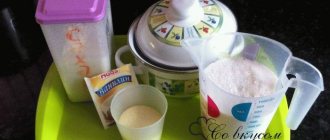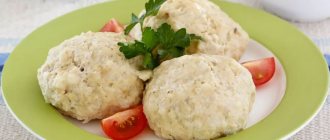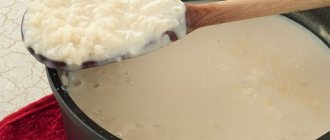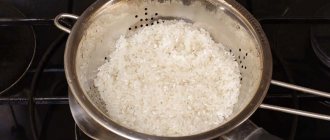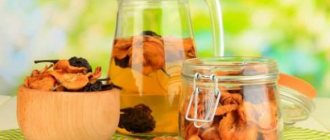A variety of dishes containing milk are necessary for a nursing mother during lactation, as they are rich in calcium, which is important for the baby.
One of the most popular dishes with which many people associate childhood is semolina porridge during breastfeeding, but it is this that causes a lot of controversy among experts. As practice shows, there are some nuances that nursing mothers need to take into account when consuming this dish during lactation.
The benefits and harms of semolina
For a nursing mother, it is very important to eat a balanced diet so that the body receives as many useful substances as possible. Semolina in this regard is a controversial product. Yes, it contains quite a large amount of vitamins and minerals:
Useful substances contained in 100 g of semolina
But there are also a number of negative aspects when using it regularly:
- Semolina is made from wheat, which means it contains gluten. Breastfeeding mothers should be careful with gluten-containing foods, as the baby may be intolerant to this protein.
- Semolina contains phytin. This substance interferes with the absorption of calcium, iron and vitamin D. All of these substances are necessary for the infant and nursing woman, so it is best to avoid any foods that may affect their absorption.
- Semolina porridge or manna are very high-calorie dishes. If mommy does not monitor her daily caloric intake, then such food in her diet will contribute to excess weight.
- Many mothers notice that eating semolina while breastfeeding contributes to gas formation and colic in the baby.
- Semolina contains a substance called gliadin. It is dangerous because it destroys the intestinal villi, which help digest and assimilate food. If you eat cereal constantly and in large quantities, it will negatively affect your digestion.
Despite all the shortcomings of semolina, you should not completely abandon its use. In small quantities and subject to certain rules, this hearty and tasty dish will not harm during breastfeeding.
Secrets of making semolina
One of the secrets of semolina porridge without lumps is stirring with a whisk
Here is a recipe for making liquid semolina porridge.
Compound:
- milk or water - 200 ml,
- semolina - 1 tbsp. l. with a slide,
- salt - a pinch,
- sugar – 1 tsp,
- butter - to taste.
Cooking process:
- Rinse the pan with ice water, add milk and bring to a boil.
- Add salt and sweeten the milk.
- Add semolina in a thin stream, stirring continuously.
- Cook for about 3-5 minutes until the cereal is completely swollen, stirring constantly.
- Add butter to the prepared porridge and mix well until it becomes more fluffy.
- Let it brew for 10–15 minutes. The porridge will thicken further.
To make the porridge light, airy and without lumps, the following secrets will help:
- It is better to stir the porridge not with a spoon, but with a whisk, so the cereal will dissolve well and will not form lumps,
- the semolina should be poured in a very thin stream into the funnel formed by the whisk,
- Cool the finished porridge under the lid, so it will not become covered with a film.
Attitude of breastfeeding specialists to semolina
Experts do not favor this product and believe that the benefits of semolina are much less than the harm it brings to nursing mothers and newborns. Therefore, they advise postponing the use of this product until the end of the breastfeeding period. There are many other cereals that will be more beneficial for a small person.
Also, modern pediatricians do not recommend feeding semolina to children under one year of age as complementary foods.
Nutritional value
Includes:
- starch ~80%;
- proteins ~14%;
- sucrose ~ 2%.
The calorie content of ready-made semolina porridge cooked in water is relatively low - only 80 kcal per 100 grams.
The product is rich in “light” carbohydrates and quickly satisfies hunger. But at the same time, the vitamin and mineral composition of semolina is negligibly poor, and a nursing mother needs adequate nutrition. Therefore, semolina during breastfeeding should not become a frequent dish on the menu of a young mother.
How to properly eat semolina for a nursing mother
In order for mother and baby to receive only benefits from semolina porridge, it is necessary to follow a few simple rules for its use during breastfeeding:
We recommend reading: Corn porridge for a nursing mother
- You should not eat semolina in the first month of a baby’s life while breastfeeding.
- You can start introducing semolina into the diet when the baby turns 2 months old. If the baby suffers from colic, then eating semolina for a nursing mother should be postponed until 3-4 months from the date of birth of the child.
- After the first portion of porridge eaten by the mother, it is necessary to monitor the child’s reaction for 48 hours. If a rash, discomfort, or colic appears, the product is strictly excluded from the diet.
- The porridge must be cooked in water (water can be diluted with milk 1:1).
- The consistency of the finished dish should be quite liquid. With this method of cooking the grain itself there will be little in the finished dish, and the harm from it will be correspondingly less.
- When preparing porridge, it is better not to overdo it with sugar. To make the finished porridge tasty, you can add a handful of nuts, prunes, dried apricots, apple or banana.
- It is better not to consume a dish such as sweet manna at all until the baby is 5-6 months old. This is due to the fact that there is quite a large amount of semolina in the recipe, which means it will do more harm.
- When breastfeeding, a mother can eat no more than 100 g of ready-made porridge for the first time and 250 g thereafter.
- Semolina porridge is best eaten for breakfast. On an empty stomach, the product will be absorbed better and cause fewer problems.
- The optimal frequency of eating semolina is no more than twice a week for breakfast. In this mode, the product will definitely not harm the baby.
- If the baby has already been diagnosed with gluten intolerance, then the use of semolina by a nursing mother is out of the question until breastfeeding is completed.
- If there is a clear lack of vitamin D in the newborn’s body, the use of semolina by a nursing mother is also unacceptable, as this can only aggravate the situation and lead to the development of rickets.
Rules for use during breastfeeding
By following the recommendations for consuming semolina porridge, you can avoid side effects from the product.
Having studied all the advantages and disadvantages of semolina porridge, you can come to the conclusion that you should not refuse this hearty and tasty dish. However, in order to get the maximum benefit from the product and not harm yourself and the baby, the mother must adhere to the following recommendations:
- Introduce into the diet when the baby is 2-3 months old.
- Do not eat during the period when the baby is worried about colic and digestive problems.
- Introduce into the diet gradually. For the first time, try 2 tablespoons and observe the baby’s reaction. If no rash, redness of the skin, or digestive problems appear, the dose is increased until the daily norm is 150 g 1-2 times a week.
- At first, cook the porridge in water and do not add a lot of sugar. If the child does not have a negative reaction, you can gradually replace water with milk.
- Cook the porridge liquid to reduce the concentration of semolina in the composition.
- Eat porridge for breakfast - it will be absorbed better in the morning, and the calories received will be used up during the day.
Recipe for delicious semolina porridge
Semolina porridge for nursing should not contain unnecessary ingredients - only milk, semolina, salt, sugar and butter
. Ingredients:
- milk or water 2 cups;
- semolina 2 tablespoons;
- salt, sugar, butter to taste.
Cooking process
- Pour milk or water (or ingredients mixed in equal proportions) into a thick-bottomed saucepan and bring to a boil.
- Add the cereal little by little, stirring constantly.
- Adjust the heat level so that the porridge boils, but not violently.
- Add salt.
- Cook, stirring constantly, for 10–15 minutes.
- Turn off the heat, cover with a lid and wrap with a towel.
- After 30-40 minutes, pour into plates, add sugar and butter if necessary.
Who can benefit from semolina?
Despite the fact that the attitude of pediatricians and breastfeeding specialists towards semolina is rather cool, there are women for whom it can be very useful.
Mothers suffering from kidney disease can eat semolina dishes without any fear. Semolina does not contain harmful proteins that are dangerous for kidney diseases. Of course, you need to consume the product in moderation and wisely, since large portions can have a negative impact on your baby’s health.
Semolina can perfectly diversify the menu of a young mother. There is no need to be afraid of new products. Reasonable consumption of this cereal will not harm the baby, and for a woman it will become a lifesaver due to its excellent taste and speed of preparation.
The benefits of semolina porridge during breastfeeding
The high energy value of semolina porridge is especially relevant in the morning.
The beneficial properties of semolina porridge have caused a lot of controversy in recent years among breastfeeding specialists. The famous pediatrician, Dr. Komarovsky, recommends eating this dish for both mothers and babies during complementary feeding, and considers semolina porridge to be no less healthy than dishes made from other types of cereals. The advantages also include its availability and low cost. We list the main beneficial properties of the product for nursing mothers and infants:
- Increases the nutritional value of breast milk. Semolina is rich in carbohydrates, minerals and vitamins, plant and animal (in milk) proteins. Porridge quickly fills you up, gives you energy, and in combination with butter increases the fat content of breast milk.
- Useful for kidney diseases. If the mother has kidney pathologies, semolina porridge is not contraindicated, since it does not contain harmful proteins that burden this organ.
- Suitable for nutrition in the postoperative period. It’s not for nothing that semolina is so often prepared in hospitals - this porridge is the only one that is absorbed from the lower intestine. It is relevant after operations in the abdominal cavity, including caesarean section. Semolina has the ability to remove mucus and fluids released after surgery from the gastrointestinal tract.
- When consumed wisely, it does not harm the figure. Despite the high calorie content of semolina, in the finished dish it is reduced by 2-3 times. The thing is that milk matters, and if you cook porridge with water, the energy value will be minimal. The main thing is to monitor the amount of butter, sugar and other nutritional additives in the dish.
Is it possible during the GW period?
Semolina during breastfeeding could become a chic dish, a true salvation for young mothers. The dish has many advantages: tasty, nutritious, healthy, satisfying, and also prepares very quickly. Semolina could significantly embellish a simple, meager diet, especially in the first months after childbirth. This milk porridge can replenish large energy reserves for a long time. Despite all the positive aspects, pediatricians unanimously say that semolina porridge is undesirable during breastfeeding. What is the reason for the ban?
In order to answer this question, it is necessary to understand the composition and properties of the product. It is important to remember that dairy products are an essential part of a young mother’s diet, as they contain a lot of calcium, which plays a significant role during growth and development. It is possible to introduce semolina into the diet of a nursing woman, but very carefully and gradually.
Pediatricians prohibit eating semolina porridge too often during breastfeeding, but it can be introduced into the diet in moderate and limited quantities. It is advisable to cook it in water or diluted milk.
Despite the fact that semolina is considered a dietary product, you should treat it with extreme caution, given its properties:
- Cereals contain quite a lot of gluten, which can cause allergies.
- There is a high percentage of phytin content. This component prevents the full absorption of calcium, iron and vitamin D. That is why semolina porridge eaten by a nursing woman can disrupt the activity of the gastrointestinal tract.
- The porridge is quite high in calories, so it can cause increased gas formation, intestinal colic and bloating in the baby.
- Contributes to the development of pathologies such as rickets if there is a deficiency of vitamin D.
Recommendations for consuming semolina porridge while breastfeeding:
- for the first time, semolina porridge must be boiled in water;
- the consistency of the finished dish should be liquid;
- the optimal serving size is 100 grams;
- In order for semolina to be absorbed well and quickly, it should be eaten on an empty stomach;
- the daily norm of semolina porridge is no more than 200 grams, the weekly norm is 400 grams;
- The serving size can be slightly increased if the baby does not have a negative reaction - itching, colic, skin rash.
Helpful advice! If you follow the recommendations of pediatricians, you can eat semolina once a week!
So that a young mother can safely eat semolina, it is important to prepare it correctly. Do not cook in large quantities. The best option is to cook the porridge for one or two servings so that it is fresh and hot.
How to cook semolina porridge correctly?
To prepare semolina porridge with milk, you will need to mix one glass of milk and water, pour it into a container, turn on the gas and boil. While stirring the liquid, carefully add two tablespoons of semolina in small portions. If you like thicker porridge, you can add three or four tablespoons of cereal. All this time, the porridge must be stirred so that lumps do not form. It takes five to eight minutes to cook the porridge, remembering to stir all this time. Next you need to add sugar and salt to taste. When the dish is ready, turn off the gas and cover the container with a lid, allowing the porridge to brew. After cooling the dish a little, you can start eating. Bon appetit!
stewed cabbage while breastfeeding
